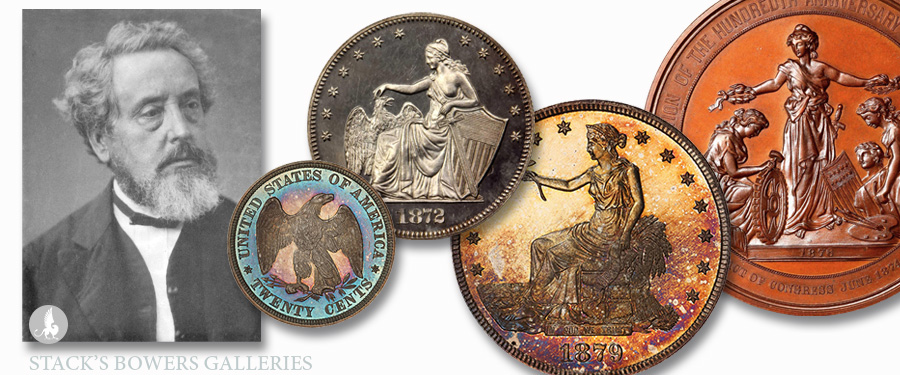
144 years ago this week, on August 31, 1879, then-U.S. Mint Chief Engraver William Barber died. Barber had been a fixture at the U.S. Mint for 15 years, serving as its chief engraver for a decade prior to his death. His designs appeared on a range of U.S. coins and medals.
Barber was born in England in 1807 and worked at De La Rue after working with his father, also an engraver, developing engraving skills. He emigrated to the United States in September 1852, settling in Boston and working on silverplate engraving and manufacturing embossing dies; he also lived in Providence in his early years in the United States.
He began working at the U.S. Mint in 1865 as an assistant engraver under James Barton Longacre, whom he succeeded as chief engraver in 1869. Barber served in this position from 1869 until his death in 1879. He was succeeded by his son, Charles (namesake of the silver subsidiary denominations of 1892-1916), who took the office in January 1880 and served until 1917.
The twenty-cent piece and trade dollar are the elder Barber’s designs with which most U.S. numismatists are likely familiar. He also designed numerous patterns, including the famous 1872 “Amazonian” coinage and the Half Union $50 gold patterns of 1877. His medal designs, which include the 1876 Centennial Exhibition medal and the “Broken Column” medal struck after Lincoln’s assassination, are also noteworthy.
Barber passed away at the end of August 1879 after falling ill while on vacation at the Jersey Shore. His colleagues at the Mint mourned him at a meeting on September 2, at which a memo praising him as an “affable, active, painstaking, and meritorious officer” was written.
John Frost’s 2018 “Re-imagining the Barbers,” published in the August 2018 edition of The Numismatist is highly recommended reading for those blog readers interested in better understanding the history of the father-son engraving duo. The Liberty Seated Collectors Club’s website also has a good biography.





